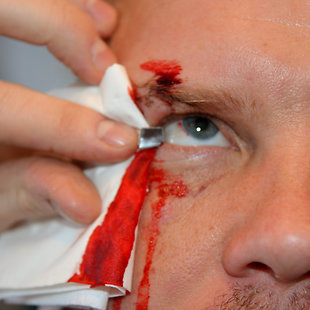Penetrating eye injury
Ocular trauma is the one cause of the acute visual loss. Even a slight defect of the globe integrity can have negative consequences. We can distinguish two types of mechanical ocular trauma: closed (contusion, lamellar laceration) and open (penetration, perforation). In the case of the penetrating ocular trauma is the corneoscleral wall damaged in its whole thickness. The anaesthesia in eye surgery has its very own specifics, that anaesthetist need to care about. This interactive algorithm describes principles of the care for the eye trauma, beggining from the first aid up to the eye surgery.
Review
Anesthesia in ophthalmology is not usually the most challenging anesthetic field. Nevertheless, it has its specific features, and failure to recognize and appreciate them may have fatal consequences for the patient's vision. The tutorial algorithm describes the course of the correct treatment of the patient from the pre-hospital laic care to the management of the late complications of the penetrating eye injury from an anesthesiological point of view. The proposed decision algorithms are logical, and in addition to the correct procedure, also the most common mistakes are discussed, with an explanation of the consequences of an improper treatment. The model scenarios are very close to the real situations, such as every anesthesia practitioner may encounter when dealing with an ophthalmology patient. Practicing the right course of action is the best preparation for a real situation. Unlike the learning scenario, life can not usually "go a step back".
Sources
YAO, Fun-Sun F., Vinod MALHOTRA a Manuel L. FONTES. Yao & Artusio's anesthesiology: problem-oriented patient management. 7th ed. Philadelphia: Wolters Kluwer Health, c2012. ISBN 978-1-4511-0265-9.
ALLMAN, Keith, Iain WILSON a Aidan O'DONNELL. Oxford handbook of anaesthesia. 3rd ed. Oxford: Oxford University Press, 2011. Oxford handbooks. ISBN 978-0-19-958404-8.
BARASH, P.G, CULLEN, B.F., STOELTING, R.K., CAHALAN, M.K., STOCK, M.Ch.: Handbook of Clinical Anesthesia, 6th edition,Lippincott Williams & Wolters Kluwer Health, ISBN 978-0-7817-8948-6
ROZSÍVAL, Pavel. Oční lékařství. Praha: Galén, 2006. ISBN 80-7262-404-0.





